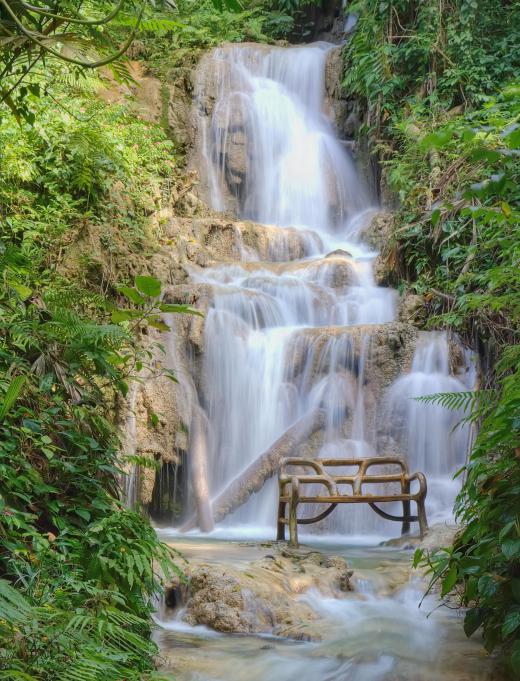What is Turbulence?
 Mary McMahon
Mary McMahon
Turbulence is a form of movement which is characterized by an irregular or agitated motion. Both liquids and gases can exhibit turbulence, and a number of factors can contribute to the formation of turbulence. When a liquid or gas is moving smoothly and regularly, it is said to be exhibiting laminar flow, which is the opposite of turbulent flow. Many people interact with some variety of turbulence on a daily basis.
This phenomenon is caused when an interruption or impediment is introduced to the flow. For example, a river may flow smoothly until it hits a boulder, at which point the water around the obstacle will become turbulent as it moves around or over it. In the air, turbulence can be caused by things such as the collision of two weather fronts, or by the formation of a storm. Air turbulence can also be caused by obstacles on the ground, ranging from mountains to buildings.

While people understand what causes turbulence, it can sometimes be difficult to understand, because it is not regular, and it can defy predictions. The agitated, irregular motion usually involves movement at various rates of speed, and a number of factors can influence the movements of liquids and gases. This is why turbulence on an aircraft can be difficult to predict, and why aircraft can be moved in different ways by turbulent patches of air, depending on where they are.
Air is in fact quite turbulent, because it is constantly moving at different rates of speed and pressure across the Earth. Most of the time, people cannot see this turbulence in action, because the air is clear, but the turbulent movement can become apparent when particles fill the air, highlighting its irregular movement, or when an object is launched into the air, in which case the movement of the object through space will reflect changing speeds and pressures in the air it travels through.
Many people have household plumbing which causes turbulent flow, in which case water sputters out of the pipe, rather than flowing smoothly. People can also observe this interesting property of fluid dynamics when they watch smoke rising from a fire. Classically, the smoke starts out straight, and then quickly starts to swirl and eddy as it rises. The heat of the fire can cause the turbulence, by affecting the air above the fire, and things like breezes can also influence the movement of smoke.
AS FEATURED ON:
AS FEATURED ON:











Discussion Comments
@Azuza - That sounds scary. I think I definitely prefer to experience my turbulence in smoke from a camp fire. Preferably with s'mores.
Whenever I see the word turbulence I definitely think of an air plane. Although there is a rational explanation for turbulence it is still scary!
I'm kind of a nervous flier anyway and I almost lost it the last time I flew. It was a three hour flight and we experienced turbulence on and off almost the whole way. I spent the whole time clutching my arm rests and praying the plane wouldn't crash! Of course I happened to be flying alone and the person next to me slept blissfully the whole way.
Post your comments